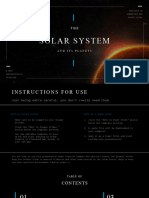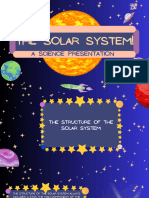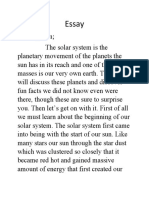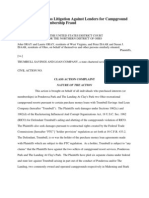0% found this document useful (0 votes)
15 views2 pagesSection 3
The document explores the formation and diversity of planets, describing how they arise from protoplanetary disks around young stars through a process called planetary accretion. It details the unique characteristics of planets in our solar system and highlights the discovery of thousands of exoplanets, some of which may exist in habitable zones. The text raises questions about the potential for life beyond Earth in the universe.
Uploaded by
mukesh geraCopyright
© © All Rights Reserved
We take content rights seriously. If you suspect this is your content, claim it here.
Available Formats
Download as DOCX, PDF, TXT or read online on Scribd
0% found this document useful (0 votes)
15 views2 pagesSection 3
The document explores the formation and diversity of planets, describing how they arise from protoplanetary disks around young stars through a process called planetary accretion. It details the unique characteristics of planets in our solar system and highlights the discovery of thousands of exoplanets, some of which may exist in habitable zones. The text raises questions about the potential for life beyond Earth in the universe.
Uploaded by
mukesh geraCopyright
© © All Rights Reserved
We take content rights seriously. If you suspect this is your content, claim it here.
Available Formats
Download as DOCX, PDF, TXT or read online on Scribd
/ 2



























































































